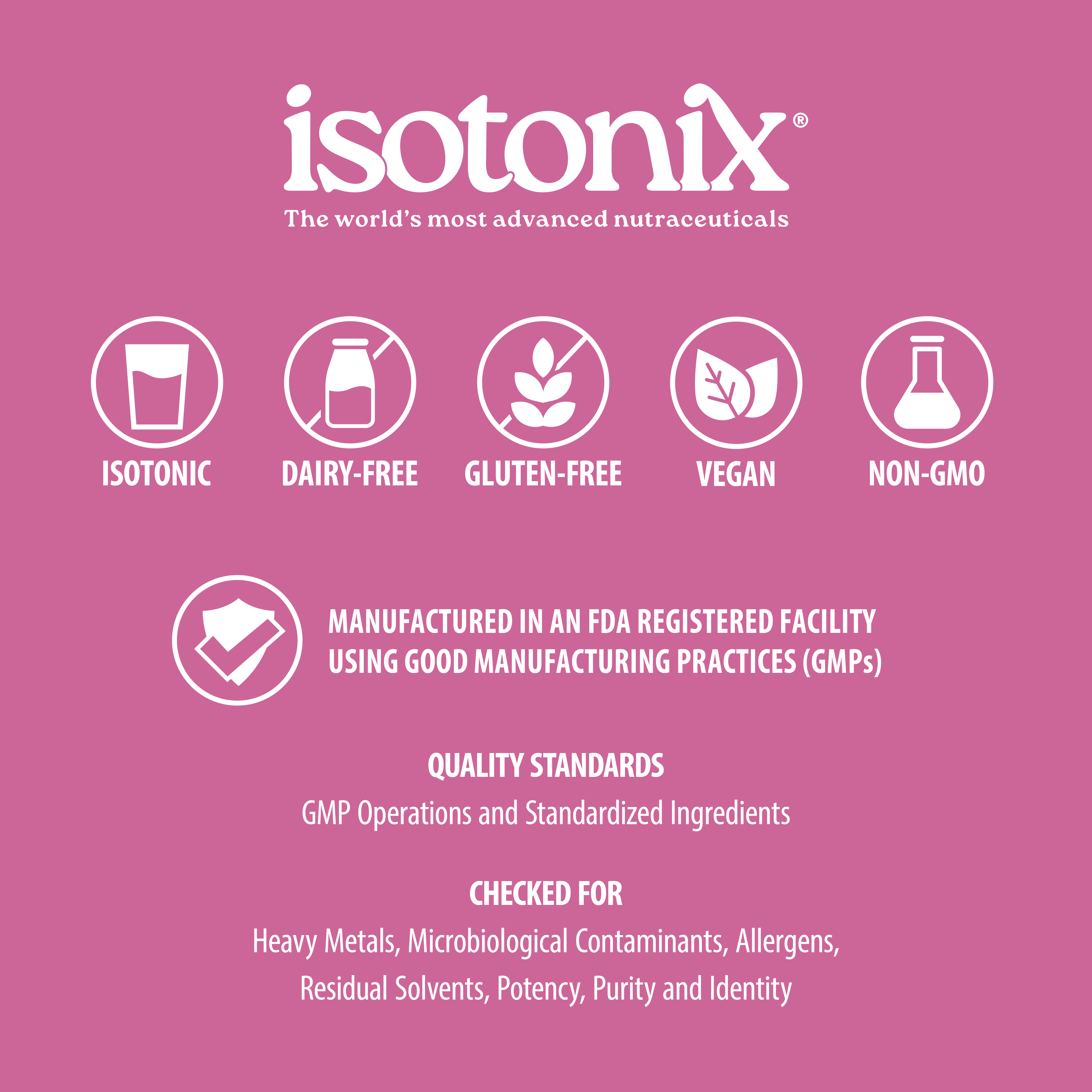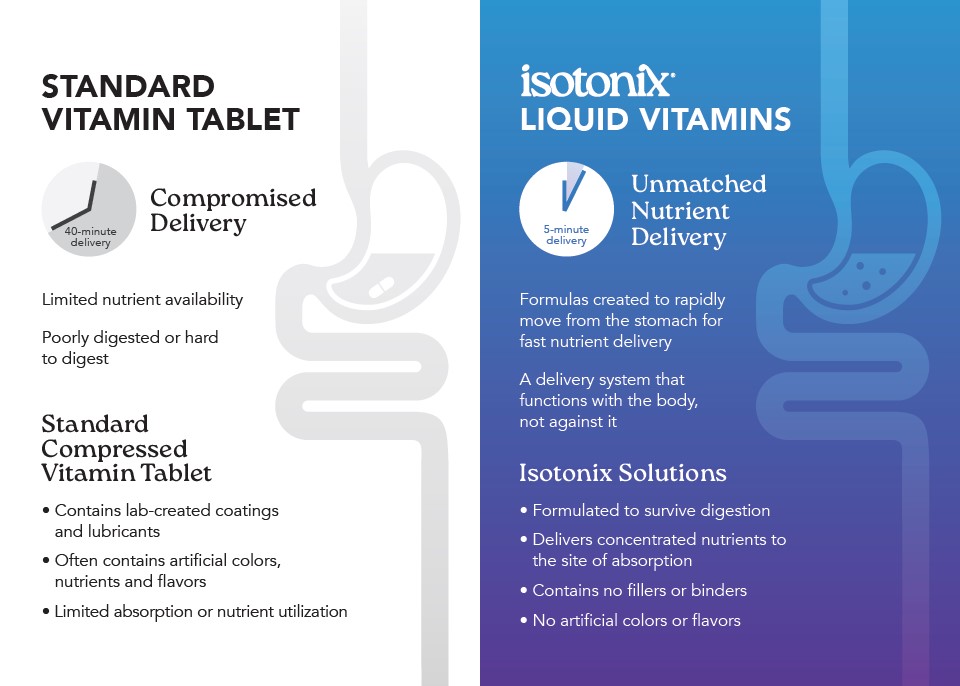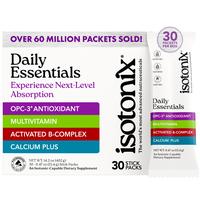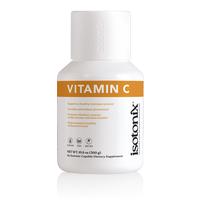Discover a new you with a healthy lifestyle change
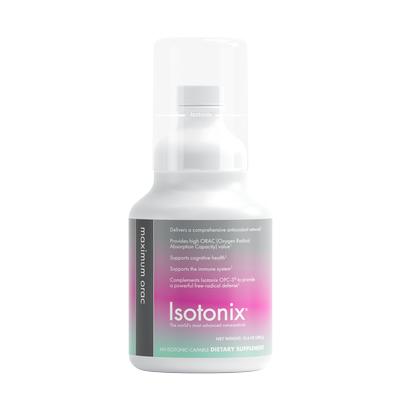
Isotonix® Maximum ORAC Formula
sku 13039
$81.95
$ 1.64 Cashback
This product qualifies for free or reduced cost shipping. Learn More
Primary Benefits* of Isotonix® Maximum ORAC Formula
Maximize your antioxidant network.
- A comprehensive antioxidant network
- Antioxidant – powerful free radical scavenger
- Supports a healthy immune system
- Helps maintain healthy cholesterol levels
- High ORAC (Oxygen Radical Absorbance Capacity) value
- Increased bioavailability due to Bioperine®
- Inhibits oxidation of low-density lipoproteins (LDL) cholesterol
- Supports cognitive health
What Makes Isotonix Maximum ORAC Unique?
A good ORAC supplement should contain at least 3000 ORAC units in the form of high-ORAC value foods such as blueberries, cranberries and elderberries. ORAC refers to Oxygen Radical Absorption Capacity, which is a method for measuring the antioxidant capacities of different foods, and how many oxygen radicals a substance can absorb. The use of natural vitamin E isomers, tocotrienols (closely related to vitamin E in chemical structure), and vitamin C in ORAC supplements can contribute to an antioxidant network inside cells, which offers far more protection than the use of a single agent alone. Tocotrienols are 50 times more powerful than vitamin E. Antioxidants are natural cell protectors, neutralizing free radicals by pairing an electron to the outermost shell of radical oxygen molecules, rendering them harmless. Antioxidants are nutrients such as vitamins, minerals and enzymes that are capable of counteracting the effects of the physiological process of oxidation in bodily tissues. Antioxidants work in two ways, chain breaking and prevention. A chain-breaking antioxidant, such as vitamins A, C and E, stabilize free radicals or cause them to decay into harmless atomic structures.*
Isotonix® Maximum ORAC is an isotonic-capable supplement composed of a powerful blend of blueberries, raspberries, cranberries and elderberries, black currant, pomegranate, plum, vitamins C and E (natural tocopherol, tocotrienols) and Bioperine® (black pepper extract). Bioperine® promotes the bioavailability of certain nutrients, especially antioxidants to promote the absorption into the cells lining of the small intestine. In order to get 3000 ORAC units through food, one would have to consume a cup of blueberries per day. The CDC and NCI recommend five to nine servings of fruits and vegetables per day. For most individuals, this is difficult to do and supplementing becomes vitally important. One capful of Maximum ORAC supplies 3000 ORAC units. Isotonix Maximum ORAC is intended to be used for its specially selected antioxidant properties.*
*These statements have not been evaluated by the Food and Drug Administration. This product(s) is not intended to diagnose, treat, cure or prevent any disease.
‡BioPerine® is the registered trademark of the Sabinsa Corporation.
Product Classifications
Gluten-Free - The finished product contains no detectable gluten (<10ppm gluten)
No Detectable GMOs - The finished product contains no detectable genetically-modified organisms
Vegan - The product is made without ingredients produced by or derived from animals
Isotonic-Capable Drinkable Supplements - Easy-to-swallow supplements in liquid form are immediately available to the body for absorption
Quality Standards - GMP Operations and Standardized Ingredients
Checked For: Heavy Metals, Microbiological Contaminants, Allergens, Residual Solvents, Potency, Purity and Identity
Isotonix Delivery System
Isotonix - the World's Most Advanced Nutraceuticals
Isotonic, which means “same pressure,” bears the same chemical resemblance of the body’s blood, plasma and tears. All fluids in the body have a certain concentration, referred to as osmotic pressure. The body’s common osmotic pressure, which is isotonic, allows a consistent maintenance of body tissues. In order for a substance to be absorbed and used in the body’s metabolism, it must be transported in an isotonic state.
Isotonix dietary supplements are delivered in an isotonic solution. This means that the body has less work to do in obtaining maximum absorption. The isotonic state of the suspension allows nutrients to pass directly into the small intestine and be rapidly absorbed into the bloodstream. With Isotonix products, little nutritive value is lost, making the absorption of nutrients highly efficient while delivering maximum results.
Key Ingredients
Cranberry Concentrate
Cranberry is a small evergreen shrub containing dark pink flowers that grows in damp bogs and mountain forests. It blooms from late spring until the end of the summer. The shrub’s small red fruits are produced in the fall. The therapeutic properties of the plant come from the fruit. Cranberries contain proanthocyanidin, which are helpful in promoting a healthy urinary tract and supporting a normal pH of urine. Preliminary evidence suggests that cranberries increase the antioxidant levels of plasma and may help maintain healthy cholesterol levels by providing antioxidant protection of LDL particles. Cranberries have a high ORAC value, next to blueberries.*
Blueberry Extract
Blueberries rank highest among many fruits and vegetables for ORAC activity and contain 25-30 different types of anthocyanins. Anthocyanins give blueberries (and other fruits) their rich blue and red coloring, and are a powerful flavonoid antioxidant. The mechanism of action surrounding anthocyanins has been studied at the molecular level, demonstrating effects such as promoting cellular health. Blueberries provide large amounts of chlorogenic acid, which is thought to be important in promoting cellular health. Blueberries support the body’s COX-2 inhibitors and provide a powerful antioxidant defense, supporting a strong, comprehensive antioxidant network within the body.*
Grape Juice Powder
Grapes contain a variety of phenolic compounds, including anthocyanidins, cinnamates and flavan-3-ols, which have all been shown to be effective in promoting cardiovascular health. Anthocyanidins are powerful flavonoid antioxidants that contribute to maintaining cellular health. Preliminary evidence suggests that anthocyanidins contribute to supporting healthy capillaries and providing antioxidant protection of LDL particles, which help to maintain healthy cholesterol levels and contribute to overall cardiovascular health.*
Raspberry Powder
Raspberries contain significant amounts of polyphenol antioxidants, chemicals linked to promoting endothelial and cardiovascular health. Raspberries are high in fiber, are an excellent source of vitamin C and manganese, a good source of vitamin K and magnesium, and contain some calcium and iron. Raspberries are powerful antioxidants, particularly due to their dense contents of ellagic acid (from ellagotannins), quercetin, gallic acid, anthocyanins, cyanidins, pelargonidins, catechins, kaempferol and salicylic acid. They have a high ORAC value next to cranberries and blueberries.*
Elderberry Extract
Elderberries contain the flavonoids rutin, isoquertin and hyperoside, as well as anthocyan glycosides, an essential oil. Elderberries have historically been used to make elderberry wine, elder brandy, and sambuca, a popular cordial. Elderberries have a high ORAC value, and contribute to promoting a comprehensive antioxidant network and stimulating the immune system.*
Black Currant Extract
Black currants are powerful antioxidants, particularly due to their anthocyanins content. They are rich sources of vitamin C, and contain high concentrations of B-vitamins, vitamin A, potassium, magnesium, iron, and calcium. Black currants have a high ORAC value. They contribute to promoting a comprehensive antioxidant network, stimulating the immune system and promoting cardiovascular health.*
Pomegranate Extract
One pomegranate delivers 40 percent of an adult's daily vitamin C requirement, and is a rich source of folic acid and antioxidants. Pomegranates are high in polyphenols. The most abundant polyphenols in pomegranate are hydrolysable tannins, particularly punicalagins, which research has shown to be the antioxidant responsible for the free-radical scavenging ability of pomegranate juice.* Many food and dietary supplement makers have found the advantages of using pomegranate extracts (which have no sugar, calories or additives), instead of the juice, as healthy ingredients in their products. Many pomegranate extracts are essentially ellagic acid, which is largely a by-product of the juice extraction process. Ellagic acid has been shown in published studies to absorb into the body when consumed as ellagitannins, such as punicalagins.*
Prune Powder
Prunes contain several powerful antioxidants, with a high ORAC content. They are rich sources of many essential vitamins and minerals. They are also rich in dietary fiber, sorbitol and isatin. They have been commonly used to promote digestive health, but also contribute to a comprehensive antioxidant network, promote cognitive health and cardiovascular health.*
Black Chokeberry Extract
Chokeberries are powerful antioxidants due to their high anthocyanins content. They are rich in vitamins and minerals, and contribute to general health and well-being. They contribute to a comprehensive antioxidant network, scavenging free radicals and promoting antioxidant protection of LDL particles.*
Bioperine® (Black Pepper Extract)
Bioperine® is a standardized extract from the fruit of Piper nigrum L (black pepper) or Piper longum L (long pepper). It contains 95 percent of piperine. The metabolic process that generates energy at the cellular level in the human body is called thermogenesis. Though thermogenesis has been identified as a key factor in maintaining weight loss, it has also been identified as playing an integral role in utilizing the daily food and nutrients that the human body consumes. It sets in motion the mechanisms that lead to digestion and subsequent gastrointestinal absorption. Piperine, in the patented form of Bioperine®, promotes the body's natural thermogenic activity. Bioperine® enhances the bioavailability of certain nutrients, especially antioxidants.*
Vitamin C (Ascorbic Acid)
Vitamin C is found in peppers (sweet, green, red, hot red and green chili), citrus fruits, brussels sprouts, cauliflower, cabbage, kale, collards, mustard greens, broccoli, spinach, guava, kiwi fruit, currants and strawberries. Nuts and grains contain small amounts of vitamin C. It is important to note that cooking destroys vitamin C activity.* Vitamin C is integral in supporting a healthy immune system, promoting cardiovascular health, maintaining healthy cholesterol levels and providing an antioxidant defense. The body does not manufacture vitamin C on its own, nor does it store it. Therefore, vitamin C must be acquired through diet and supplementation.*
Vitamin E (Natural tocopherol: d-gamma 70%, d-delta 21%, d-alpha 7%, d-beta 2%)
Vitamin E is a collective term for a group of compounds from the tocopherol and tocotrienol chemical groups. The most valuable sources of dietary vitamin E include vegetable oils, margarine, nuts, seeds, avocados and wheat germ. Safflower oil contains large amounts of vitamin E (about two thirds of the RDA in ¼ cup), and there are trace amounts in corn oil and soybean oil. Vitamin E is available in a natural or synthetic form. In most cases, the natural and synthetic forms are identical except the natural form of vitamin E is better absorbed and retained in the body. For those individuals watching their dietary fat consumption, which is relatively common in the world of dieting, vitamin E intake is likely to be low, due to a reduced intake of foods with high fat content.* The main health benefit of supplemental vitamin E comes from its immune-boosting antioxidant activity. It is also known to provide protection for the cardiovascular system. Vitamin E is one of the most powerful fat-soluble antioxidants in the body. In turn, vitamin E protects cell membranes from free radicals.* The combination of vitamins C and E helps form the antioxidant network, allowing the vitamins to engage (synergistically) in each others’ regeneration from the spent state back to the active antioxidant state so that they can continue neutralizing free radicals.
Tocotrienols (mixed isomers)
Palm tocotrienols, along with tocopherols, are members of the vitamin E family and are extracted from the fruit of the palm tree. Tocotrienols are one of the two related families of compounds that are collectively regarded as vitamin E. As mentioned above, vitamin E is one of the most powerful fat-soluble antioxidants in the body, and the antioxidant properties of tocotrienols appear to be superior to those of tocopherols. Dietary sources of tocotrienols include almonds, rice bran oil, pistachios, palm oil and barley. Like vitamin E, palm tocotrienols also help maintain a healthy level of HMG-CoA reductase, a key enzyme in our bodies used by the liver to produce cholesterol. New data on the biological activity of tocotrienols in cardiovascular health maintenance along with its antioxidant properties have raised tocotrienols to a new level of prominence in the scientific community.
FAQs
- What is an antioxidant?
Antioxidant means against oxidation. Antioxidants work to protect lipids from peroxidation by radical elements. Antioxidants are effective because they give up their own electrons to free radicals. When a free radical gains the electron from an antioxidant, it no longer needs to attack a cell and the chain reaction of oxidation is broken. - Where do free radicals come from?
Simply breathing (respiration), metabolizing food and generating ATP to fuel enzymatic reactions can create free radicals. Free radicals are created by the following: eating high-fat foods, processed foods, food preservatives, ionizing radiation (UV, gamma, X-rays), exercise, stress, pollution, chlorine in drinking water, and tobacco smoke. Maximum ORAC contributes to the body’s ability to counteract oxidation by increasing the levels of antioxidants in the bloodstream, and protecting the other antioxidants that are acquired from our diets and promoting their full antioxidant activity in some cases. - I already take an antioxidant supplement with vitamins A, C, and E; is there an advantage in taking supplements in Isotonix form?
Yes. When you ingest food, drink, beverages or most nutritional supplements, the stomach must secrete diluting juices, enzymes, hydrochloric acid and at least one vitamin-binding protein to begin the process of digestion. This process can take about 40 minutes, depending on the size of the meal, and it requires both time and energy. The advantage of using Isotonix products are that they are delivered directly into the small intestine nutritionally concentrated. This maximizes the opportunity for absorption of the nutrients across the cell membranes. Isotonix products, such as the Maximum ORAC, are usually taken on an empty stomach, which considerably shortens the transit time through the body. Since the transit time is shortened, it minimizes the chance that vital micronutrients will be trapped in the body by fats, fibers and tannins, or even inactivated by a highly acidic pH level, which can all lead to neutralization in the nutritional value. The solution flows into the small intestine, where it mixes with pancreatic digestive juices, which adds sodium bicarbonate to adjust the pH to neutral, and in so doing, maximizes the potential uptake of nutrients. - What is the difference in taking an isotonic formula as compared to taking traditional tablets?
Isotonic solutions offer the fastest and most efficient delivery of all oral forms of supplementation. The nutrients in the solutions are quickly and effectively absorbed into the bloodstream, and do not linger in the stomach causing gastrointestinal discomfort. Isotonix products are not encapsulated, so there is no need for them to contain fillers, binders, coatings, lubricants, disintegrators or artificial coloring like there can be in traditional nutrient supplements. - What does O.R.A.C. stand for?
Oxygen Radical Absorption Capacity is an assay that measures the antioxidant activity of a substance. ORAC assays measure how many oxygen radicals a substance can absorb. The higher its ORAC score, the better it is at helping our bodies destroy free radicals. - What is the best way to store this product?
Keep Isotonix stored in a dry, cool place. If Isotonix are stored in the kitchen, keep them away from the stove, sink, heat-generating appliances or window ledges. If you live in a very humid area, you may store Isotonix products in the refrigerator – but not in the fruit and vegetables area.
Science
- Cao, G., et al. Oxygen-radical absorbance capacity assay for antioxidants. Free Radical Biology and Medicine. 14: 303-11, 1993.
- Bagchi, D., et al. Safety and whole-body antioxidant potential of a novel anthocyanin-rich formulation of edible berries. Mol Cell Biochem. 281:197-209, 2006.
- Zheng, W., et al. Oxygen radical absorbing capacity of phenolics in blueberries, cranberries, chokeberries, and lingonberries. J Agric Food Chem. 51:502-9, 2003.
- Cao, G., et al. Increases in human plasma antioxidant capacity after consumption of controlled diets high in fruit and vegetables. Am J Clin Nutr. 68:1081-7, 1998.
- Mazza, G., et al. Absorption of anthocyanins from blueberries and serum antioxidant status in human subjects. J Agric Food Chem. 50:7731-7, 2002.
- Kay, C., et al. The effect of wild blueberry (Vaccinium angustifolium) consumption on postprandial serum antioxidant status in human subjects. Br J Nutr. 88:389-98, 2002.
- Youdim, K. A., et al. Incorporation of elderberry anthocyanins by endothelial cells increases protection against oxidative stress. Free Radic Biol Medicine. 29:51-60, 2000.
- Packer, L., et al. Molecular aspects of alpha-tocotrienol antioxidant action and cell signalling. Journal of Nutrition. 131:369S-373S, 2001.
- Halvorsen, B., et al. A systematic screening of total antioxidants in dietary plants. J Nutr. 132:461-71, 2002.
- Maatta, K., et al. Phenolic compounds in berries of black, red, green, and white currants (Ribes sp.). Antioxid Redox Signal. 3:981-93, 2001.
- Faria, A., et al. Antioxidant properties of prepared blueberry (Vaccinium myrtillus) extracts. J Agric Food Chem. 53:6896-902, 2005.
- Liu, M., et al. Antioxidant and antiproliferative activities of raspberries. J Agric Food Chem. 50:2926-30, 2002.
- Wang, R., et al. Bioactive compounds from the seeds of Punica granatum (pomegranate). J Nat Prod. 67:2096-8, 2004.
- Youdim, K., et al. Polyphenolics enhance red blood cell resistance to oxidative stress: in vitro and in vivo. Biochim Biophys Acta. 523:117-22, 2000.
- Chun, O., et al. Superoxide radical scavenging activity of the major polyphenols in fresh plums. J Agric Food Chem. 51:8067-72, 2003.
- Kamal-Eldin, A., et al. The chemistry and antioxidant properties of tocopherols and tocotrienols. Lipids. 31: 671-701, 1996.
- Hamilton, I., et al. Interactions between vitamins C and E in human subjects. British Journal of Nutrition. 84:261-267, 2000.
- Berry, E., et al. Synergism between vitamins E and C: biological implications for future research. Int J Cancer. 83:288, 1999.
- Frei, B., et al. Ascorbate is an outstanding antioxidant in human blood plasma. Proceedings of the National Academy of Sciences USA 86(16):6377-6381, 1989.
- Wilson, T., et al. Cranberry extract inhibits low density lipoprotein oxidation. Life Sciences. 62:381-386, 1998.
- Abuja, P., et al. Antioxidant and prooxidant activities of elderberry (Sambucus nigra) in low-density lipoprotein oxidation. J Ag Food Chem. 46:4091-4096, 1998.
- Ruel, G., et al. Changes in plasma antioxidant capacity and oxidized low-density lipoprotein levels in men after short-term cranberry juice consumption. Metabolism. 54:856-61, 2005.
- Chu, Y., et al. Cranberries inhibit LDL oxidation and induce LDL receptor expression in hepatocytes. Life Sci. 77:1892-901, 2005.
- Vuorela, S., et al. Preclinical evaluation of grapeseed, raspberry, and pine bark phenolics for health related effects. J Agric Food Chem. 53:5922-31, 2005.
- Casadesus, G., et al. Modulation of hippocampal plasticity and cognitive behavior by short-term blueberry supplementation in aged rats. Nutr Neurosci. 7:309-16, 2004.
- Galli, R., et al. Fruit polyphenolics and brain aging: nutritional interventions targeting age-related neuronal and behavioral deficits. Ann N Y Acad Sci. 959:128-32, 2002. Review.
- Monograph. Sambucus nigra (elderberry). Altern Med Rev. 10:51-4, 2005.
- Majeed M., Badmaev, V., and Prakash, L. Bioperine®. New Jersey: NutriScience Publishers, Inc., 1999.
- Lambert, J., et al. Piperine enhances the bioavailability of the tea polyphenol (-)-epigallocatechin-3-gallate in mice. J Nutr. 134:1948-52, 2004.
- Shoba, G., et al. Influence of piperine on the pharmacokinetics of curcumin in animals and human volunteers. Planta Med. 64:353-6, 1998.
- Badmaev, V., et al. Piperine derived from black pepper increases the plasma levels of coenzyme Q10 following oral supplementation. J Nutr Biochem. 11:109-13, 2000.
- Bagchi, D, et al. Oxygen free radical scavenging abilities of vitamins C and E, and a grape seed proanthocyanidin extract in vitro. Res Commun Mol Pathol Pharmacol 95:179-89, 1997.
- Bagchi, D, et al. Cellular protection with proanthocyanidins derived from grape seed. Ann NY Acad Sci 957:260-70, 2002.
- Drew B, Leeuwenburgh C. Aging and the role of reactive nitrogen species. Ann NY Acad Sci 959:66-81, 2002.
- Graham DY, Smith JL, Bouvet, AA. What happens to tablets in the stomach. J Pharm Sci 79:420-24, 1990.
- Havsteen B. Flavonoids, a class of natural products of high pharmacological potency. Biochem Pharm 32:1141-48, 1983.
- Koparker AD, Augsburger LL, Shangraw RF. Intrinsic dissolution rates of tablet fillers and binders and their influence on the dissolution of drugs from tablet formulations. Pharm Res 7:80-85, 1990.
- Rimbach G, Virgili F, Park YC, Packer L. Effect of procyanidins from Pinus maritime on glutathione levels in endothelial cells challenged by 3-morpholinosydnonimine or activated macrophages. Redox Rep 4:171-77, 1999.
- Soloway MS, Smith RA. J Am Med Assoc 260:1465, 1988.
Reviews
Displaying 1 - 5 of 17
12/21/2024
by MabelC
Love it 😍!
Since I’m taking this supplement, I can see the difference in my health.
love the flavor, very easy to take😍!
Response from Customer Service
12/23/2024
Thank you for your enthusiastic review of Isotonix® Maximum ORAC Formula! We're delighted to hear that you're noticing a positive change and enjoying the flavor. It's wonderful to know that taking this supplement is an easy and enjoyable part of your daily routine. Your feedback is greatly appreciated, and we're thrilled to be part of your journey toward better wellness. Thank you for choosing Isotonix and sharing your experience!
11/12/2023
by Jose FranciscoS
Total quality
Taking this product I feel with a lot of energy, I am happy, my wife is very happy with this formula
Response from Customer Service
11/13/2023
Dear Valued Customer,
Thank you for your review! We're delighted to hear that you and your wife are enjoying the Isotonix® Maximum ORAC Formula and experiencing its benefits. Your positive feedback means a lot to us, and we appreciate you taking the time to share your experience. We are committed to providing high-quality products and it's wonderful to know that it's making a difference in your lives.
Thank you again!
The Product Information Team
08/25/2021
by PatriciaE
Wonderful product
After using this product , I have so much energy. I love this product.
Response from Customer Service
08/26/2021
Dear Valued Customer,
Thank you for taking the time to share your thoughts on the Isotonix® Maximum ORAC Formula! We are happy to hear you are pleased with the product.
Thank you again!
The Product Information Team
11/28/2020
by BrianV
A++
Part of my daily routine, highly recommended, love the Isotonix delivery system.
Response from Customer Service
11/30/2020
Dear Valued Customer,
Thank you for taking the time to share your thoughts on the Isotonix Maximum ORAC Formula! We are happy to hear you are pleased with the product.
Thank you again!
The Product Information Team
10/06/2020
by XINGMEIZ
我的莓果配方
多种莓类提取物,焕白透亮,强抗氧化
女性妇科必备品
Response from Customer Service
10/07/2020
尊敬的客户,
感谢您抽出宝贵的时间对Isotonix Maximum ORAC公式发表您的看法! 我们很高兴听到您对产品感到满意。
再次感谢你!
产品信息团队
Dear Valued Customer,
Thank you for taking the time to share your thoughts on the Isotonix Maximum ORAC Formula! We are happy to hear you are pleased with the product.
Thank you again!
The Product Information Team
- Prev
- Next

